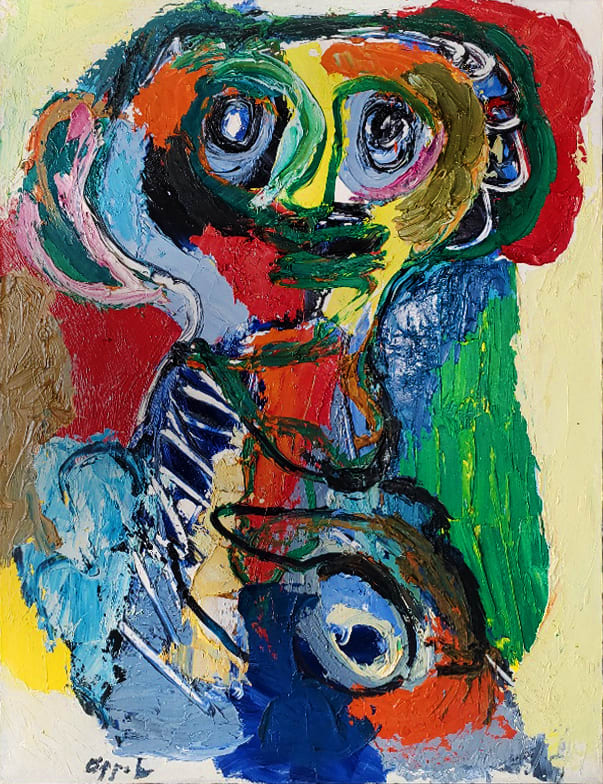
Even in his most abstracted compositions, characterized by saturated color and sweeping brushstrokes, Appel retained a relationship with figuration
Along with Asger Jorn and the Belgian artist known as Corneille, Karel Appel founded the group CoBrA (its name was an acronym of Copenhagen, Brussels, and Amsterdam) in 1948. The group emphasized spontaneous paint application, abstracted imagery, and rich color. In part a response to the austerity of de Stijl’s rigid geometries, CoBrA stressed instinct and a deliberate naivete in the painting process.
Along with Asger Jorn and the Belgian artist known as Corneille, Karel Appel founded the group CoBrA (its name was an acronym of Copenhagen, Brussels, and Amsterdam) in 1948. The group emphasized spontaneous paint application, abstracted imagery, and rich color. In part a response to the austerity of de Stijl’s rigid geometries, CoBrA stressed instinct and a deliberate naivete in the painting process.
While the group was short-lived—it disbanded in 1951—it was credited with bringing a new focus on gestural art to Europe, paving the way for the development of Tachisme and Abstract Expressionism in Europe.
Even in his most abstracted compositions, characterized by saturated color and sweeping brushstrokes, Appel retained a relationship with figuration, as in Birds over the Village. The composition resembles the title; the triangular forms below look like rooftops, and the birds above have eyes, beaks, and contours suggesting feathers. But the subject of the painting is more the artist's dissolution of the forms than a truly descriptive tableau. His lines are deliberately scumbled and sketchy, and the forms only generalized. Appel rejected most literal readings of his work--in 1956, he described his approach: “I never try to make a painting; it is a howl, it is naked, it is like a child, it is a caged tiger . . . . My tube is like a rocket writing its own space.”
Born in Amsterdam, Appel studied at the Royal Academy of Fine Arts in that city. Jean Dubuffet was among his early influences; Dubuffet’s Art Brut approach to painting would prove highly influential for Appel. After the formation of CoBrA, Appel moved to Paris in 1950. In the years that followed, he had a solo show at the Palais de Beaux-Arts in Brussels, and won the Unesco Prize at the Venice Biennale in 1954. In 1960, the year after Personage and Landscape, he was awarded first prize at the Guggenheim International Exhibition in New York.



















